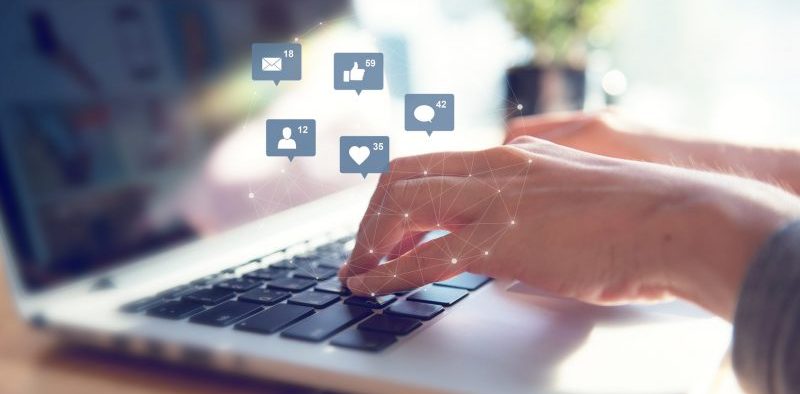One of my favorite interpersonal communication theorists, Gregory Bateson, seemed lightyears ahead of his time (early 1970s). He introduced the “double-bind “concept which I believe has very real application to us. As we continue to lunge ourselves into a future state right out of Huxley’s dystopian Brave New World, I think it would be wise to stop and realize the implications of what we’re getting ourselves into – from the human cond ition perspective. I’m not talking about a future armaments race with “Cyberdyne Systems” leading the way despite being a fan of the Terminator franchise.
ition perspective. I’m not talking about a future armaments race with “Cyberdyne Systems” leading the way despite being a fan of the Terminator franchise.
What I am getting at however, is that we should give credence to the number of growing communications technologies hitting the market, those that are becoming part of the digital mainstream and their assimilation into our society. These technologies and social platforms serve to accentuate, punctuate, amplify or otherwise manipulate our traditional channels of human communication. It could be argued that today we are constructing an ecological world for ourselves in which the future is still uncertain. This begs the question, “Are we bound by the technology ‘double-bind’”? If we’re not careful, it’s quite possible we may be inconspicuously constructing the most elaborate double-bind for ourselves that human society has ever seen. There is a way to find that balance, or a so-called place of happy medium. This concept isn’t impossible, rather a stretch toward developing sound ecology of mind.
What is a Double-Bind?
The double-bind is broadly characterized as a situation – typically of two or more individuals – in which an individual is faced with making a decision in which s/he is in a dilemma of how to make that decision considering that there are consequences to either side of the decision. There are also consequences for deciding not to make the decision at all.
This can be characterized as an inescapable paradox that can result in erratic behavior such as confusion or anxiety on the part of the individual facing the dilemma if s/he is unable to choose an alternative. It was introduced to the American Psychological Association in 1969. One could argue that this concept also has very noticeable implications on our digital self – who we are and how we represent ourselves online.
Prescriptive Elements
Bateson outlines six major tenets and their inextricable linkages, that, when combined, result in a challenging predicament that may be difficult to overcome, perhaps even impossible. It’s a bit too complex to cover them all here in one short blog post, but the general idea is that a primary negative experience/encounter occurs repeatedly over an indeterminate amount of time.
There’s no good option or ideal way out and the situation continues to amplify, becoming increasingly more difficult to manage. Other external factors add to the phenomenon such as how individuals may alter their behavior toward the individual facing the predicament, to include verbal and nonverbal elements. This all comes to a crescendo when the individual realizes that s/he must wait for the situation to pan out or settle down in order to determine how they might recover. That could mean a complete change in behavior based on the series of events unfolding from the double-bind itself.
Double-Binds and Digital Communication
We’ve all heard the term “going viral,” and we generally associate that with something good or bad. If it’s good and discoverable in a post, mention, tweet, like or share, that can serve us well and support our personal brand development. However, if that post, mention, tweet, like or share was perceived or maybe even reconstructed (by an external community/audience/follower group) to elicit something negative or controversial, it can have damaging effects on our personal brand. We may find ourselves drawn into a double-bind that’s getting exponentially worse by the minute. Recovery may take months, years or may not even be possible.
We’re communicative creatures by our very nature, and technology has enabled us to connect from anywhere, at any time, from a multitude of platforms, apps, networks, forums and other channels. While I’m in support of these collaborative technologies, I want to create more awareness around the very real consequences of a poorly managed online presence.
Double-binds are also very real. They can have rippling effects not just for your career but also your family. We sometimes both empower and inflate these technologies to dangerously high levels because of our need to be well-liked, followed, shared, retweeted, etc. Sometimes that can come at an unwarranted expense and we find ourselves giving in, making a mistake or simply losing focus. Managing a dozen or more social accounts sounds like a full time job in and of itself. I’m sure there are those out there that can do it well, but I would advise scaling back or at least proceeding with caution out of concern for the “original self,” and your human wellbeing. Our hardware wasn’t mean to be always on, thinking, engaging and interacting.
Unanticipated Social Rifts
You alone have the free will or choice to enable those technologies and platforms you use to communicate. To what greater or lesser degree is of course up to you and what you’re comfortable with. My advice here is to proceed with caution, using sound judgment and a “think before you post” mentality. Remember, once it’s out there for the world to see, there’s really no way of getting it back. You’re stuck with it, linked to it and your social networks are very aware of your activities – further amplifying the message on your behalf.
Checking Up On Your Social Health
While I know there are those out there that may disagree with me, I’m a big believer in limited personal/professional use of social media. For me, it’s a personal choice for my own wellbeing and physical health. I have one social channel I use for professional networking, and the others I only create for occasional use in the case they might be required to fulfill a work-related duty. I’m usually quick to delete those accounts as soon as I no longer need them. As you’ve seen in my last post, I’m a bigger fan of in person, face-to-face communication. I feel more complete that way, but I’m sure there are those who feel more connected when they’re connected.
Here’s the takeaway: by developing an awareness of the implications of social mismanagement and the repercussions that can follow, you can avoid those sticky double-binding situations. It can be a good thing to consider reducing your digital footprint into something you’re comfortable managing.
For more reading on this topic, check out:
How to Use Social Media to Advance Your Career
How to Disconnect From Social Media
Blake Scates is part of the GovLoop Featured Contributor program, where we feature articles by government voices from all across the country (and world!). To see more Featured Contributor posts, click here.





Great point about making your digital footprint something you’re comfortable managing as opposed to what you think is expected of you. These platforms can get overwhelming at times, but like you mentioned, if managed properly, they can serve a great purpose.